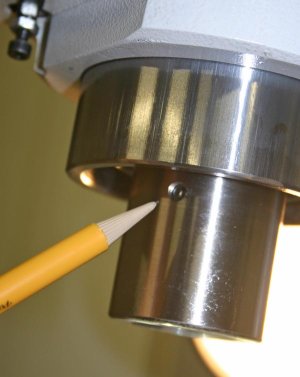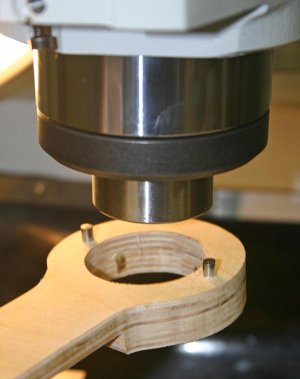slow-poke
Ultra Member
My old mill used MT3 style taper, and most of the time I simply left a ER type collet installed and populated the inserts as require, once in a while I would swap out the ER collet for something else, and removing typically required a reasonably good smack with a brass hammer to get the two separated.
Fast forward to the new mill with R8 taper I read that R8 is an improvement from MT3. Mill came with some tooling: some new end mills and a set of straight collets. Am I correct to assume that generally speaking straight collets should clamp better and run truer than an ER setup?
Originally I was thinking I will need to order a new R8 ER collet set but not sure it's worth it?
Now for the newbie question: How do you lock the spindle when tightening the drawbar?
I'm guessing your supposed to have a spanner that engages the spline above the spindle pulley?
If that's the case I'm missing it.
Newbie question 2: I don't feel a key inside the spindle, from what I have read, it is fairly common for the key to be sheared off, and it seems often people run them often for years with no key. Comments on this please.
Fast forward to the new mill with R8 taper I read that R8 is an improvement from MT3. Mill came with some tooling: some new end mills and a set of straight collets. Am I correct to assume that generally speaking straight collets should clamp better and run truer than an ER setup?
Originally I was thinking I will need to order a new R8 ER collet set but not sure it's worth it?
Now for the newbie question: How do you lock the spindle when tightening the drawbar?
I'm guessing your supposed to have a spanner that engages the spline above the spindle pulley?
If that's the case I'm missing it.
Newbie question 2: I don't feel a key inside the spindle, from what I have read, it is fairly common for the key to be sheared off, and it seems often people run them often for years with no key. Comments on this please.
Last edited:


